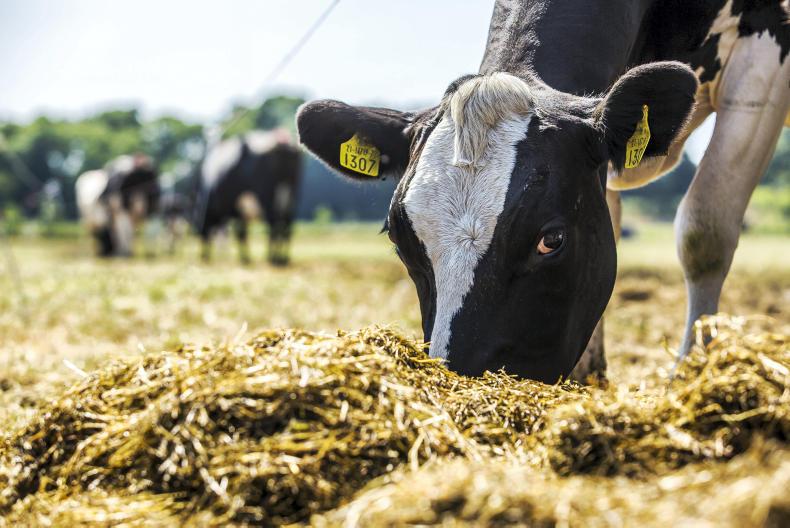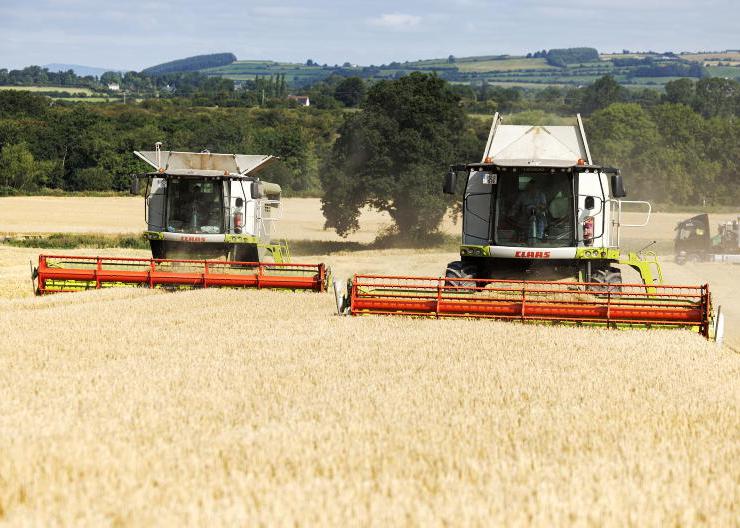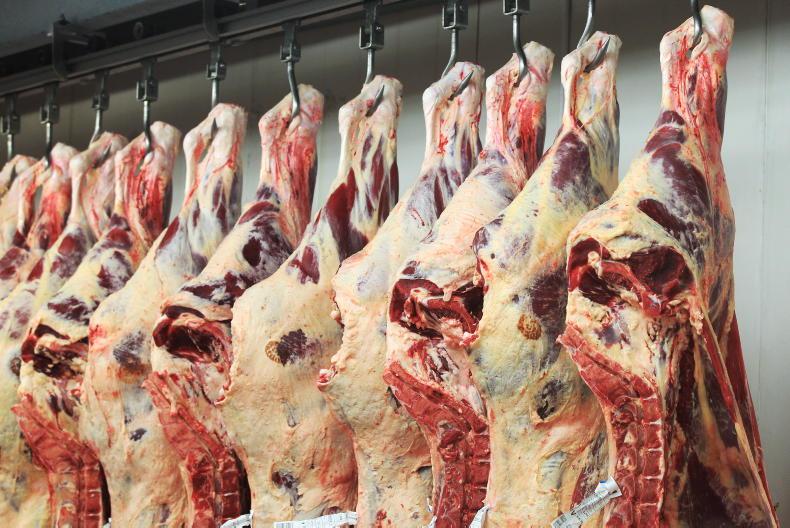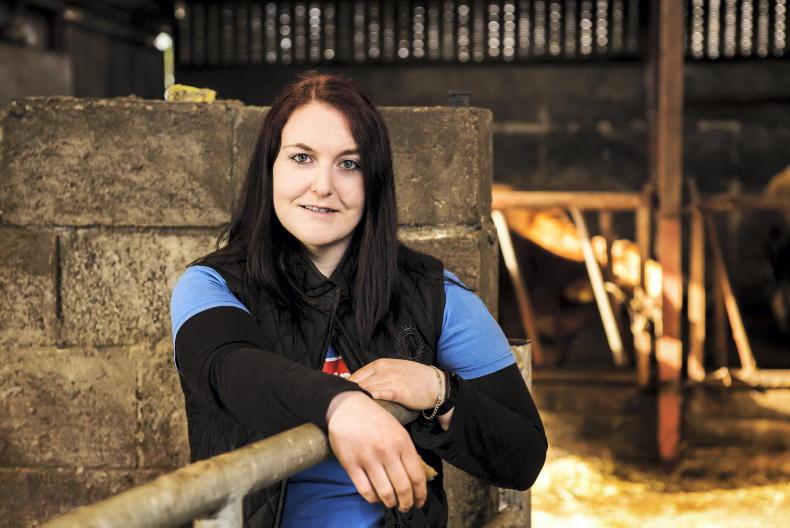For many farmers, organic farming can offer an alternative production system and provide access to premium markets. It comes as no surprise that for many who enter organics in Ireland, the decision is an economic one.
This was the case for Leicestershire dairy farmer Wil Armitage. Despite having one of the highest producing herds in the UK, Wil struggled to make a decent return from conventional production.
“When you’re high input and high output and when margins get squeezed, there’s very little left and it’s a fairly high risk system” he explains.
Organic conference
Wil runs four farms in partnerships, milking over 1,200 cows. Three of these farms are organic and span 3,000ac.
He spoke at this week's National Organic Training BioFarm conference. The conference is in its second year and focuses on all things biological and regenerative agriculture. The Irish Farmers Journal caught up with Wil after the conference.
Biologically active soil
Wil’s farming system places a high emphasis on healthy, biologically active soil. This has undoubtedly contributed to the success of his dairy enterprise. However, he admits that when he began the conversion process to organics in 2005, he didn’t have the knowledge to do so.
Wil explains how his soil wasn’t in the correct biologically state to accommodate organic production, which meant there wasn’t much of the conversion aid payment he received left over.
His original farm was in long-term tillage up until the 1990s and soil organic levels were as low as 2%. The introduction of dairying on to the land help increase soil biological levels and, through a gradually process, soil organic matter levels now stand at 8%.
Organic crops
The use of organic cereals and sugar beet is crucial for his business. Wil has an attention to detail, and has perfected the production of these crops using organic methods.
Grass is still an important crop on his farms and he operates a tight paddock grazing system. However, he also explains that the use of lucerne and red clover play an important role in helping to satisfy the protein requirements of his herds.
Wil has been perfecting the agronomy of organic sugar beet over the past number of years. The agronomy of the crop is intensive, ensuring that nutrition and weed control requirements are met through a combination of slurries, dung, salts, cover crops and stale seedbeds.
Interestingly, he notes that two applications of slurry when the crop is emerging has been key to controlling flee beetle as they are deterred by the ammonia in the slurry.
Growing his own feed
The performance of his beet has been steadily increasing over and so far this year, the organic crop is averaging 30t/ac. He also maintains high average yield levels for oats at just under 3t/ac.
“Oats are a seriously undervalued crop in conventional agriculture - they are brilliant and mobilising P and K,” he said.
Wil also grows a whole crop mix consisting of oats, barley, peas, beans, red and white clover as well as lucerne and grasses. This mix is capable of yielding 15t/ac (fresh weight) in 100 days and provides an important feed source for his herds.
Read more
Listen: reducing farm inputs by 50% with the help of companion cropping
Listen: will the tillage industry miss out on Ireland’s biogas boom?
For many farmers, organic farming can offer an alternative production system and provide access to premium markets. It comes as no surprise that for many who enter organics in Ireland, the decision is an economic one.
This was the case for Leicestershire dairy farmer Wil Armitage. Despite having one of the highest producing herds in the UK, Wil struggled to make a decent return from conventional production.
“When you’re high input and high output and when margins get squeezed, there’s very little left and it’s a fairly high risk system” he explains.
Organic conference
Wil runs four farms in partnerships, milking over 1,200 cows. Three of these farms are organic and span 3,000ac.
He spoke at this week's National Organic Training BioFarm conference. The conference is in its second year and focuses on all things biological and regenerative agriculture. The Irish Farmers Journal caught up with Wil after the conference.
Biologically active soil
Wil’s farming system places a high emphasis on healthy, biologically active soil. This has undoubtedly contributed to the success of his dairy enterprise. However, he admits that when he began the conversion process to organics in 2005, he didn’t have the knowledge to do so.
Wil explains how his soil wasn’t in the correct biologically state to accommodate organic production, which meant there wasn’t much of the conversion aid payment he received left over.
His original farm was in long-term tillage up until the 1990s and soil organic levels were as low as 2%. The introduction of dairying on to the land help increase soil biological levels and, through a gradually process, soil organic matter levels now stand at 8%.
Organic crops
The use of organic cereals and sugar beet is crucial for his business. Wil has an attention to detail, and has perfected the production of these crops using organic methods.
Grass is still an important crop on his farms and he operates a tight paddock grazing system. However, he also explains that the use of lucerne and red clover play an important role in helping to satisfy the protein requirements of his herds.
Wil has been perfecting the agronomy of organic sugar beet over the past number of years. The agronomy of the crop is intensive, ensuring that nutrition and weed control requirements are met through a combination of slurries, dung, salts, cover crops and stale seedbeds.
Interestingly, he notes that two applications of slurry when the crop is emerging has been key to controlling flee beetle as they are deterred by the ammonia in the slurry.
Growing his own feed
The performance of his beet has been steadily increasing over and so far this year, the organic crop is averaging 30t/ac. He also maintains high average yield levels for oats at just under 3t/ac.
“Oats are a seriously undervalued crop in conventional agriculture - they are brilliant and mobilising P and K,” he said.
Wil also grows a whole crop mix consisting of oats, barley, peas, beans, red and white clover as well as lucerne and grasses. This mix is capable of yielding 15t/ac (fresh weight) in 100 days and provides an important feed source for his herds.
Read more
Listen: reducing farm inputs by 50% with the help of companion cropping
Listen: will the tillage industry miss out on Ireland’s biogas boom?










SHARING OPTIONS